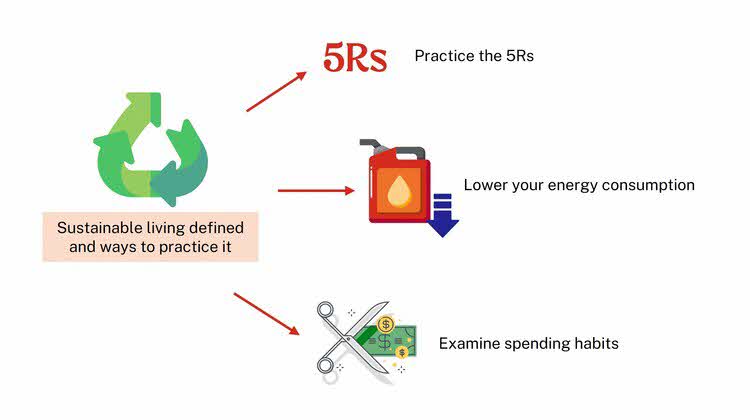Sustainable living defined and ways to practice it
'Sustainability' has become quite a buzzword. Read on to find out the definition of sustainability and ways to practice it.
Have you noticed? Topics on pollution and climate change have become a norm these days – there is no lack of news surrounding the environment. Sadly, this is due to the increased carbon emissions from human activities such as burning of fossil fuels, rearing livestock and deforestation. The silver lining is that ‘sustainability’ has also become quite a buzzword. This shows we are capable of either destroying or improving the environment. So, what is the meaning of sustainable living? Defined by the United Nations Environment Programme, sustainable living refers to ways of living, social behaviours and choices that minimise environmental degradation while supporting equitable socio-economic development and better quality of life for all. Let’s then look at the ways of practicing sustainable lifestyles from a bird’s eye view.
Practice the 5Rs
We are all too familiar with the 3Rs, but the additional two Rs are key in being mindful of living more sustainably. In her book Zero Waste Home, activist Bea Johnson coined a framework for waste reduction called the 5Rs which are visualised in a particular hierarchy, beginning with “refuse”.
- Refuse
This is the first step in minimising potential waste, especially of non-recyclable goods and products. While it may take time to remember, you can start by saying “No” to the use of plastic straws and plastic bags.
- Reduce
This refers to reducing the use of harmful and non-recyclable products, such as single-use plastics and takeaway packaging. Reducing food waste is also helpful – so, only buy what you can finish and share large serving. This reduces what goes into the landfills that negatively impacts the soil, water and overall environment.
- Reuse
Perhaps you now realise that many takeaway plastic cups and containers you’ve thrown away ends at the landfills. Replace those things with reusable food containers, cutleries, water bottles and coffee mugs. If you have to takeaway, look out for food outlets that allow you to bring your containers and cups.
- Recycle
Many of us learned about this in school. Take note of the items you can recycle, and for those you cannot recycle, work on refusing, reducing and reusing them. It would be good practice to separate your waste at home into these categories – plastics, metal, paper, glass, food waste, e-waste, and clothing.
- Rot
Another sustainable practice is to create a valuable resource from food waste and organics by home composting. Make use of fruits, vegetables, and yard trimmings and turn them into a nutrient-rich soil fertilizer that helps your garden grow while reducing waste to the landfill. You may want to search for various useful tips to get started.
These 5Rs may be overwhelming to be done straightaway, but a good way to start is by refusing items or products you do not need or would be harmful to the environment.
Lower your energy consumption
Energy use contributes to one’s carbon footprint. While we can never totally cut out energy use, we can surely reduce consumption of electricity and fuel. Turn off the electrical appliances not in use, take the public transport, and maybe even spend less hours on your phone. Not only will this reduce your carbon footprint, but you also get to save money on your utilities!
Minimising how you consume energy is a step towards living sustainably – the key is not to waste resources that are readily available.
Examine spending habits
Building a sustainable lifestyle can also begin with examining your spending habits. This means spending only on what you need, to sustain, feed and protect yourself and your family. This does not mean you restrict yourself from your wants; just be conscious and wise of what you are buying. It would be worthwhile to purchase locally made/sourced goods and produce instead. This would lessen your carbon footprint and benefit the society around you.
By looking at your buying patterns, you would be able to identify that which are important and which can be reduced. That, along with supporting local goods are steps towards a sustainable lifestyle.
We are just barely scratching the surface of things we can do in efforts to sustainable living, but small measures are worth a try and can make an impact on the planet and people. Try the 5Rs, lower your energy consumption, and examine your spending habits. What will you choose to start being a little more conscious today?
